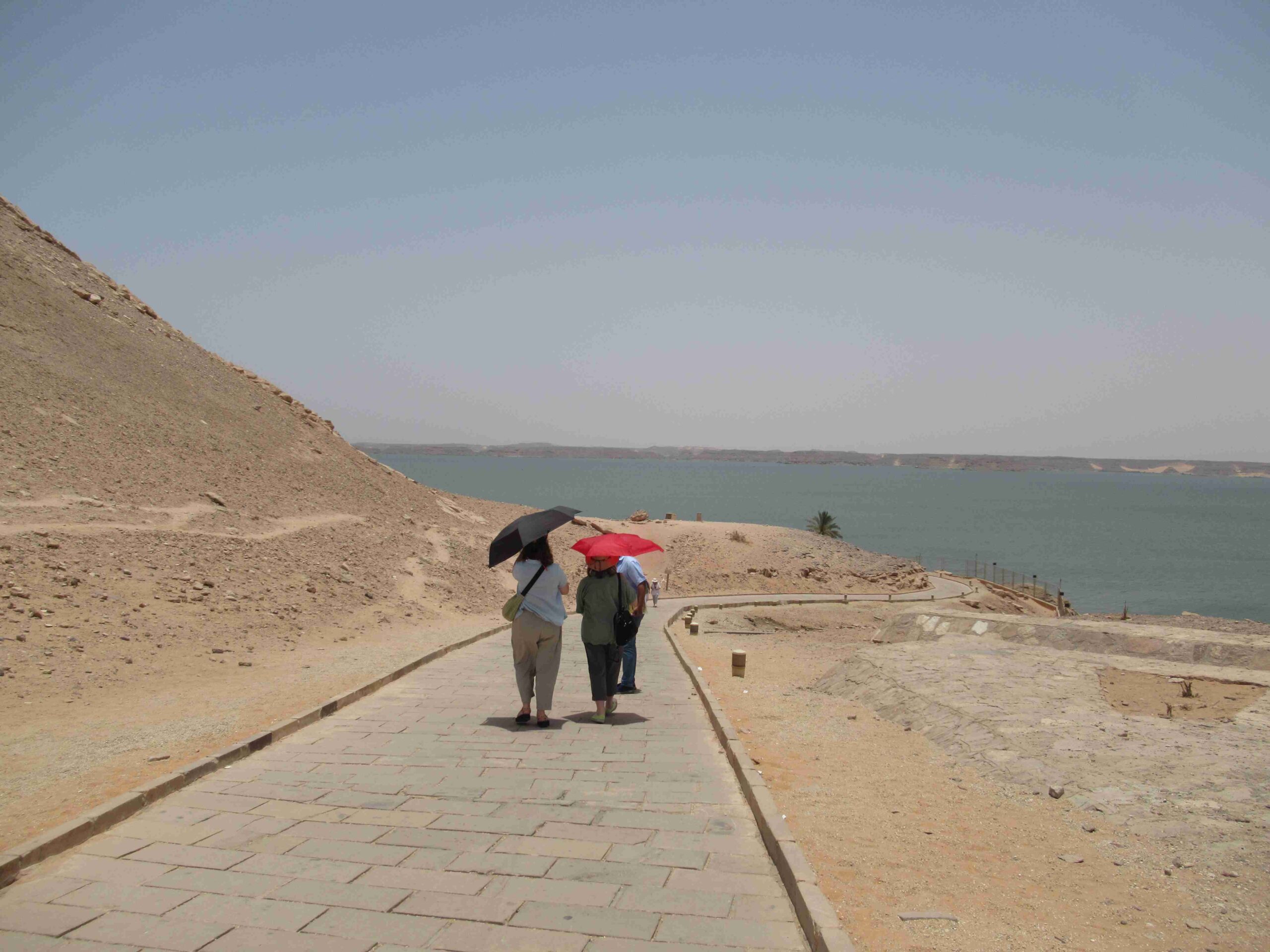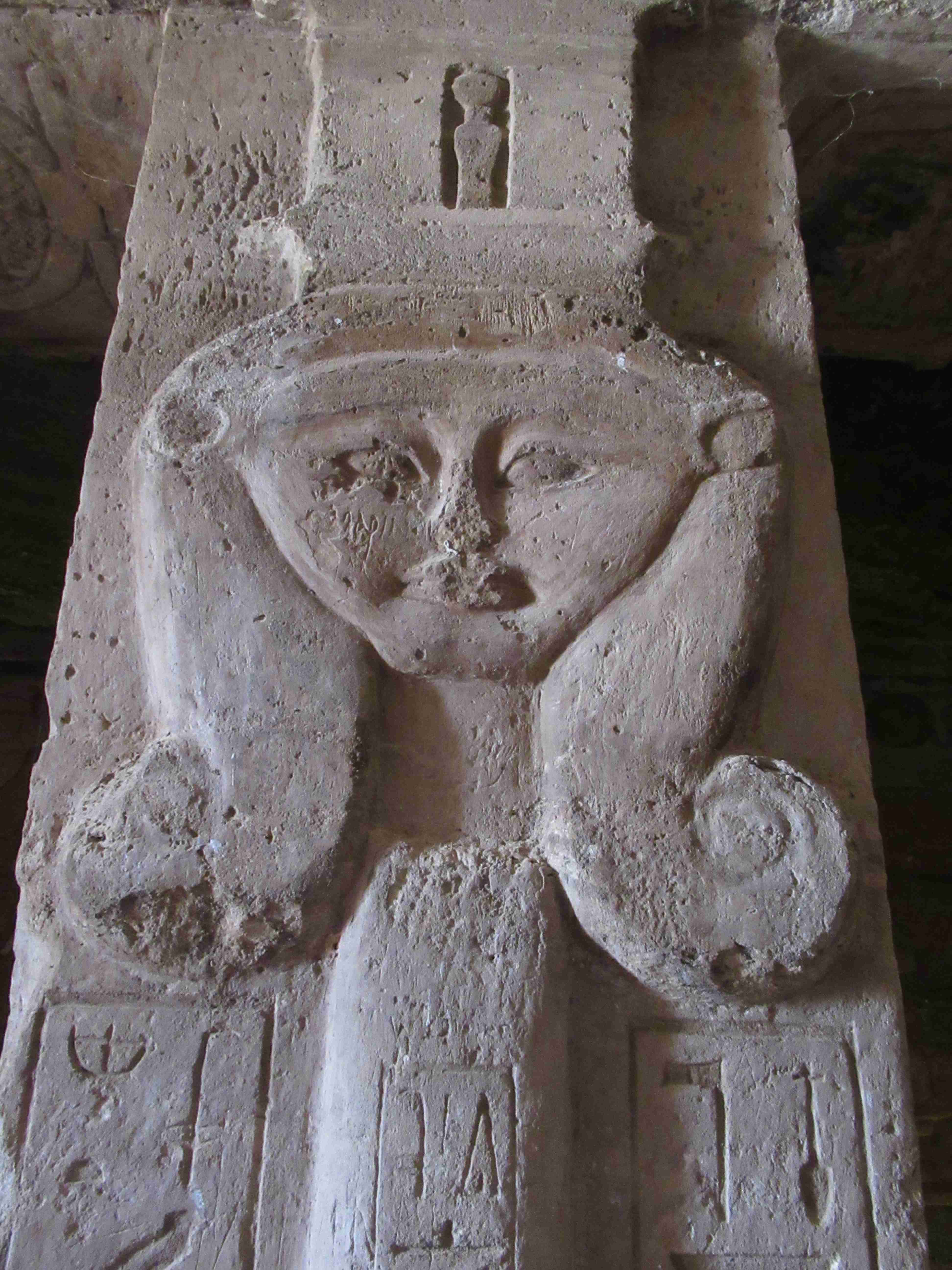After our time in Alexandria, we navigated a parade of planes, trains, and automobiles (minus the trains but plus a few ferry rides) to get to our hotel in Aswan. We crashed for the night, then went straight on to Abu Simbel the next morning. Now, it’s possible to fly from Aswan to Abu Simbel, but for our day there, the only available flights would have left us too little time for sightseeing. So I decided to further torture my travel companions by making arrangements for us to drive there instead – about 3.5 hours each way through the nothingness of the Sahara desert.

And what is it about Abu Simbel that is worth so much schlepping? The answer is a pair of gigantic temples that were cut into the sandstone near the Sudanese border more than 3,000 years ago.

The guy who built the temples (or rather, decreed that they be built) was Ramesses II, also known as Ramses II or Ramses the Great. (If I’m not mistaken, isn’t “Ramses” also a brand of condoms? Make of that what you will.) Our boy Ramses was a 19th Dynasty pharaoh who ruled for such a long time and amassed so many important military victories that he convinced himself he was a bonafide Egyptian deity, or at least ought to be.

Inside the temple, Ramesses II continued to make his case for self-deification by erecting eight huge pillar statues in his own image paired with Osiris, the god of the underworld and judge of the dead.

The temple also has several side chambers and an inner sanctuary. In the hopes of securing a place at the very top of the afterlife ladder, it seems Ramses the Great left no stone unturned. (Sorry, bad pun. Okay, terrible pun. Look, reading this blog isn’t costing you a dime. Plus there are no ads and no surreptitious data gathering. So if you object to crappy attempts at humor, the management humbly suggests you try a truly hilarious website such as flat_earth.com.)



The second temple is devoted to Nefertari, one of Ramesses II’s 328 wives. (No, not really. But he did marry something like two dozen women. Doesn’t sound quite as exhausting as 328, but still.)

I don’t know if Nefertari was the pharaoh’s favorite squeeze or if she just knew how to push his buttons, but either way she got her own temple. I like this chick.

But the most fascinating thing about the temples at Abu Simbel is that they were moved to a new location in the 1960s and recreated exactly as they were before. This was done because the original site, which was rediscovered in 1813, was too close to the Nile River and would have ended up submerged after the construction of the High Dam in Aswan. So the whole kit and kaboodle – all the statues, chambers, hieroglyphics, and the still-mysterious LED lighting – was cut up into about 16,000 huge chunks, each weighing several tons, and relocated 65 meters higher and 200 meters further back from the river. Truly an amazing feat of engineering. And because one of the heads at the main temple entrance was found already broken off, it was reassembled that same way. Being a little OCD myself, I would have fixed the frickin thing. But hey Egypt, you do you.

In the end, Ramses the Great did not get his way. Despite trying to sell himself as the next big thing, the people of Egypt chose not to worship him as a god after his death. So all that temple-building and chest-beating was for nothing. Except, of course, that 3,000 years later he still looks pretty good.





Both of these Temples were moved from their original sites to their current location to prevent them from being submerged in the new, (not so new now) Lake Nasser. Yes, I taught history and am old but THAT was a true engineering marvel. Each section was dismantled and reconstructed with great care. Ramses also out lived many of his sons and ruled as God/king longer than most. He was thought to be the SOB that would not let Moses and the Israelites go…..Yul Brenner did a good job but I bet the original was a force to be reconned with.
Lake Nasser is the part of the Nile River that was created by the Aswan High Dam.
Great photos, great quips, great adventure!
Excellent photos and narratives. I like the humor too!
Nice reading you again! Can’t wait for the next chapter.
Wow. I think pictures do not do the temples justice. They look so majestic! Thanks for the narrative.